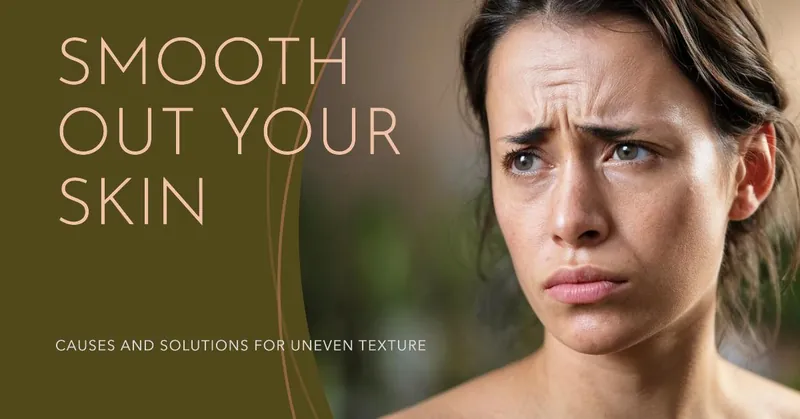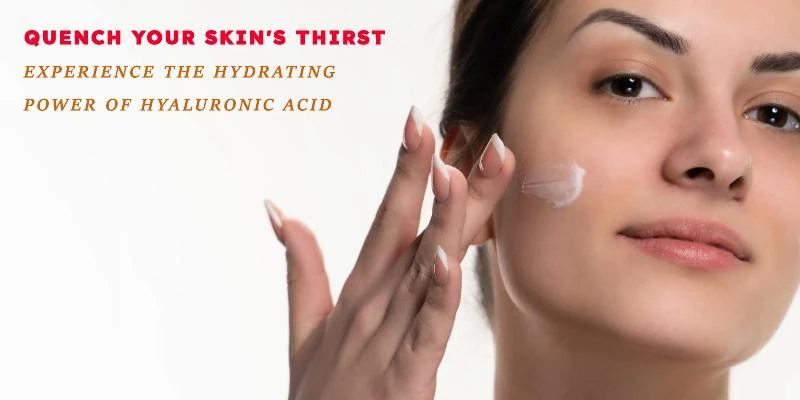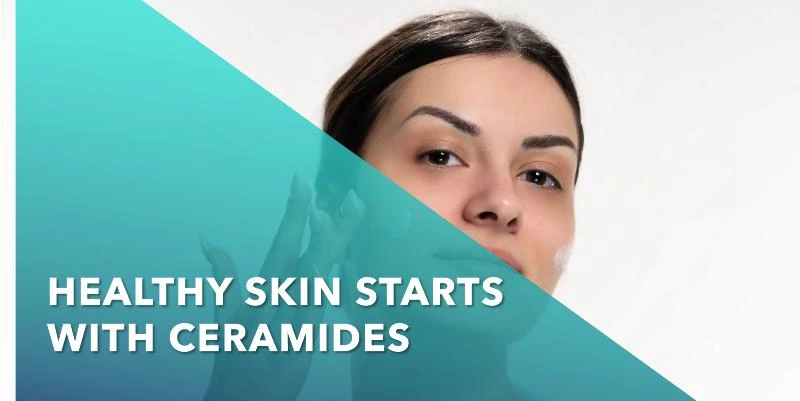How LED Light Penetrates Skin: The Cellular Response Explained
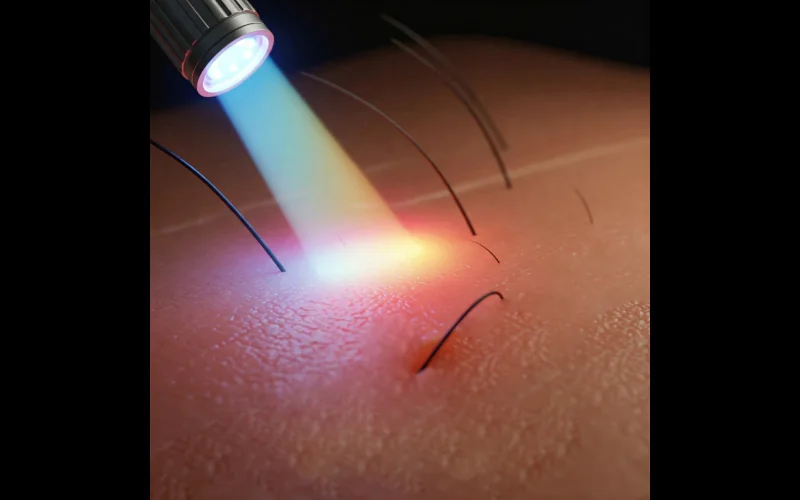
Imagine your skin is like a wonderful, layered garden. When a special light, like from an LED light therapy device, shines on it, tiny particles of light start a microscopic adventure. Think of these light particles as little messengers trying to find their way through the different layers of your skin, almost like sunlight filtering through leaves. This journey is what we call LED Light Penetration in Skin.
This article is like a friendly guide that will help us understand what happens when this light reaches the tiny building blocks of your skin – the cells. We’re going to explore the LED light therapy cellular response, like listening in on the “invisible conversation” happening between the light and your cells.
Have you ever wondered how photobiomodulation LED therapy for skin rejuvenation actually works? It’s not magic! It’s all about how light interacts with your cells. When you understand the mechanism of LED light skin penetration and how it talks to your cells (How LED light penetrates skin cells), you can make better choices about treatments and understand why they work. For example, knowing that different colors of light travel to different depths can help you understand why a certain light is used for a specific skin issue.
Getting to know this “invisible conversation” can give you hope and excitement about the amazing things light can do for your skin in a gentle and non-invasive way. So, let’s get started on this fascinating journey and discover the secrets of how light and your skin cells work together!
- The Architecture of Skin: A Light Penetration Perspective
- The Physics of Light Penetration
- The Cellular Reception of Light
- The Mitochondrial Response: Powerhouse Activation
- From Cellular to Tissue Response: The Communication Network
- The Genetic Expression Changes: How LED Light Therapy Influences Your Cells
- Specific Cell Type Responses
- From Cellular Response to Visible Results
- Maximizing Cellular Response Through Treatment Parameters
- Takeaway
The Architecture of Skin: A Light Penetration Perspective

Think of your skin as a cozy house with many floors. The top floor, the one you can see, is called the epidermis. It’s like a tough roof that protects everything underneath. Below that is the next floor, the dermis. This is a thicker layer where important things like stretchy fibers (collagen and elastin), tiny blood vessels, and different kinds of cells live. The bottom floor, if you want to imagine it, is the hypodermis (sometimes called subcutaneous fat), which is mostly fatty tissue.
When LED light tries to make its way through your skin (LED Light Penetration in Skin), it interacts with different things on these “floors”. The light bumps into skin cells, the stretchy fibroblast activation that helps make collagen synthesis happen, and even the red blood in the tiny vessels.
Just like a house’s walls can be thick or thin, the thickness of your skin isn’t the same all over your body. For example, the skin on your eyelids is very thin, while the skin on the soles of your feet is much thicker. This difference in thickness affects how deeply the light can penetrate. Also, everyone’s skin is a little different, so the LED light effect on cellular functions can vary from person to person.
Now, let’s talk about how light behaves when it hits your skin; these are the skin’s architecture and optical properties. Imagine shining a flashlight on a window. Some light will bounce back (that’s reflection), some light will get absorbed by the glass, and some will pass right through. Your skin is similar. It can absorb some of the light, especially certain colors, while some light might bounce off, and some can scatter as it goes deeper (light absorption, reflection, and scattering).
There’s something called the optical window in biological tissues. Think of it as a special range of light colors (wavelengths) that can pass through the skin more easily than others. Red and near-infrared light are in this window, which is why they can often reach the deeper layers of the skin. Blue light, on the other hand, tends to be absorbed more in the top layers. Understanding these optical properties helps us know which treatment parameters (like the color of light) are best for targeting different skin concerns.
The Physics of Light Penetration

LED Light Penetration in Skin is like throwing tiny balls of light at a wall made of different things. When these light balls, called photons, hit your skin, a few things can happen. Some might bounce right off; that’s reflection. Think of it as a ball hitting a mirror. The smoother your skin, the more light might reflect.
Other light balls might go into the skin but then get bounced around in different directions as they hit cells and other tiny structures. This is called scattering, like trying to see through a frosted window where the light gets spread out.
Finally, some of the light balls will get “caught” by things in your skin, like water, blood (hemoglobin), and the pigment that gives your skin its color (melanin). This “catching” is absorption. It’s like a sponge soaking up water. Different things in your skin are better at absorbing different colors (wavelengths) of light.
Now, here’s a cool thing: different colors of light can go to different depths (How LED light penetrates skin cells). Think of it as some colors having more energy to travel further. Blue light, for example, has a shorter wavelength and mostly gets absorbed in the top layers of your skin, like the epidermis. That’s why it’s often used for things on the surface, like some types of blemishes.
Red light, with a longer wavelength, can go a bit deeper, reaching into the next layer, the dermis. Imagine it like a ball thrown with a bit more force. This is why red light is often used for things like soothing irritated skin and helping with non-invasive skin rejuvenation.
There’s also the idea of an “optical window” in your skin. Imagine this window being made of special “glass” that certain colors of light can pass through more easily. Red and near-infrared light are in this optical window in biological tissues, meaning they can travel deeper because they aren’t absorbed as much by water and other things in the skin.
So, how deep the LED light penetrates (Mechanism of LED light skin penetration) depends a lot on its color (wavelength) and how much it gets reflected, scattered, and absorbed by the different parts of your skin (skin architecture and optical properties). Understanding this helps scientists and doctors choose the right light to get the LED light effect on cellular functions they want for different skin treatments.
The Cellular Reception of Light
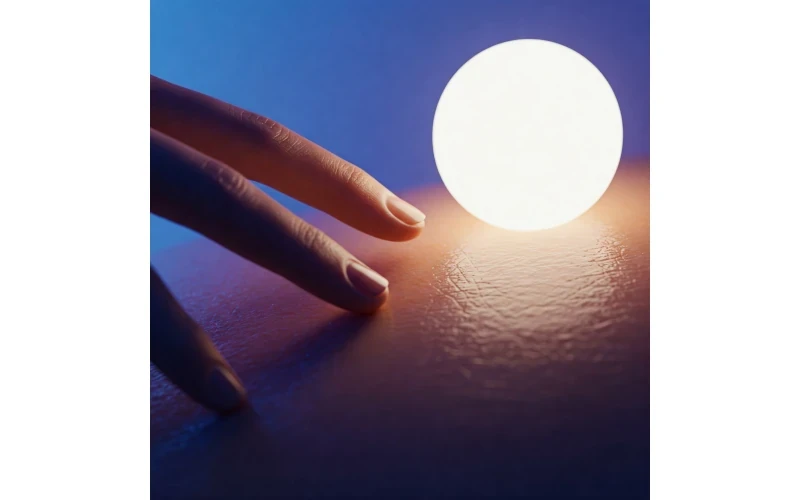
When LED light penetrates your skin layers, it reaches specialized cellular photoreceptors called chromophores. These act like antennas, capturing the light and initiating the cellular response. Understanding how this interaction occurs can help explain the benefits of LED light therapy for skin rejuvenation and other treatments.
Key Photoreceptor: Cytochrome C Oxidase (COX)
One of the most essential chromophores in this process is cytochrome c oxidase (COX), an enzyme located in the mitochondria — the energy powerhouse of the cell. When red or near-infrared light from LED therapy reaches the mitochondria, COX absorbs the light. This stimulates mitochondrial activity, leading to the production of adenosine triphosphate (ATP), the energy currency of cells. Enhanced ATP production supports cellular repair, collagen synthesis, and reduced inflammation.
The Role of Other Photoreceptors
While COX is the primary chromophore involved in red and near-infrared light absorption, other cellular receptors can interact with different wavelengths of light. For example:
- Opsins: Found in skin cells, these receptors are more sensitive to blue and green light. Though their exact role in skin treatments is still under study, opsins are believed to influence cellular signaling pathways, particularly in acne treatment.
- Melanin: This skin pigment absorbs light, especially UV and visible light, providing a protective effect. In LED therapy, melanin absorption helps regulate pigmentation issues.
- Hemoglobin: Present in blood vessels, hemoglobin absorbs blue and green light. This makes blue light therapy effective for reducing redness and inflammation.
The Optical Window and Light Penetration
The concept of the optical window is crucial in LED light therapy. This term refers to the range of wavelengths that can penetrate skin tissue with minimal absorption by water or other biological components. Red light (600-700 nm) and near-infrared light (700-1100 nm) fall within this window, making them ideal for targeting deeper layers of the skin, stimulating fibroblast activity, and promoting collagen production.
In contrast, blue light (400-470 nm) has a shorter wavelength and is primarily absorbed in the epidermis. This makes it suitable for treating surface-level skin issues, such as acne, by targeting bacteria and reducing oil production.
The Mitochondrial Response: Powerhouse Activation
When LED light penetrates the skin and reaches the cells (LED Light Penetration in Skin), a key target for red and near-infrared wavelengths is the mitochondria, often referred to as the cell’s powerhouses. Within the mitochondria lies the electron transport chain (ETC), and a crucial enzyme in this chain is cytochrome c oxidase (CCO), a vital cellular photoreceptor. Photons of light absorbed by CCO trigger significant events (LED light therapy cellular response).
The absorption of light energy enhances the activity of CCO, leading to enhanced production of ATP (adenosine triphosphate), the cell’s primary energy currency (Mitochondrial activation and ATP production). This increased energy fuels various cellular processes. Additionally, light exposure can cause the release of nitric oxide (NO) from its bond with CCO. This disassociation allows for improved oxygen binding to CCO, further promoting cellular respiration and ATP synthesis. The released NO can also have other effects, such as vasodilation.
Furthermore, the mechanism of LED light skin penetration involves influencing the levels of reactive oxygen species (ROS). While high levels of ROS can be damaging, low levels generated by photobiomodulation can act as signaling molecules, activating various pathways and transcription factors that are important for cell growth, repair, and gene expression changes with light therapy. This mitochondrial response is a relatively rapid event following the initial photon absorption event, setting off an energy cascade that can lead to downstream effects like fibroblast activation and collagen synthesis and ultimately contribute to non-invasive skin rejuvenation and other therapeutic benefits.
From Cellular to Tissue Response: The Communication Network
Once an LED light stimulates cells, particularly the mitochondria, a cascade of events unfolds that extends beyond individual cells to influence the surrounding tissue. Stimulated cells begin producing various intracellular signaling molecules, such as ATP, nitric oxide (NO), and reactive oxygen species (ROS). These molecules don’t just stay within the cell; they can be released and act on neighboring cells, initiating a broader tissue response.
One crucial aspect of this communication is the activation of fibroblasts. These cells, located in the dermis, are responsible for producing collagen and elastin, the structural proteins of the skin. The signaling molecules released by light-stimulated cells can trigger fibroblasts to increase their activity, leading to enhanced collagen synthesis and tissue repair. This is a key mechanism behind non-invasive skin rejuvenation observed with red light therapy.
Furthermore, light therapy can modulate inflammatory mediators. Cytokines, which are signaling molecules involved in inflammation and healing, can be influenced by the cellular response to light. Studies show that red light can reduce the expression of pro-inflammatory cytokines, contributing to the alleviation of skin inflammatory conditions.
The collective action of these cellular communications also impacts the extracellular matrix (ECM), the network of proteins and other molecules that provides structural support to tissues. Increased fibroblast activity and the modulation of inflammatory processes contribute to a healthier and more organized ECM.
At the tissue level, these individual cellular and molecular responses are coordinated to achieve a therapeutic effect, such as wound healing, pain reduction, or skin rejuvenation. The initial absorption of light by cellular photoreceptors sets off a chain reaction that involves both intracellular changes and intercellular communication, ultimately leading to a coordinated tissue response.
The Genetic Expression Changes: How LED Light Therapy Influences Your Cells
Photobiomodulation (PBM), commonly known as LED light therapy, influences gene expression by triggering intracellular signaling pathways after photons are absorbed by photoreceptors like cytochrome c oxidase (CCO) in mitochondria. This process alters the activity of transcription factors, which regulate gene expression, leading to therapeutic effects.
Gene Expression Modulation Through Cytochrome C Oxidase
CCO, located in the mitochondria, is a primary photoreceptor for red and near-infrared light. When light is absorbed, it enhances CCO activity, resulting in increased ATP (adenosine triphosphate) production. This surge in energy stimulates various cellular processes, including changes in gene expression.
Influence on Key Transcription Factors
Red light therapy can affect transcription factors like NF-κB and HIF-1 (Hypoxia-Inducible Factor 1).
- NF-κB: Known for regulating genes involved in inflammation and immune response, it can modulate genes that promote cell survival and tissue repair.
- HIF-1: Often activated by 660 nm light, it stimulates the production of vascular endothelial growth factor (VEGF), supporting angiogenesis (formation of new blood vessels) and wound healing.
Oxidative Stress Response and Antioxidant Protection
PBM can also regulate the expression of proteins involved in the oxidative stress response, including:
- Cytoplasmic Thioredoxin Reductase (TrxR) and Aldo-Keto Reductase: These enzymes are essential for protecting cells from oxidative damage.
- Superoxide Dismutase (SOD1): Upregulated by light therapy, SOD1 neutralizes harmful reactive oxygen species (ROS), promoting cellular health.
Genetic Changes and Skin Rejuvenation
The mitochondrial response initiated by LED light therapy leads to downstream effects, including enhanced collagen synthesis. Activated fibroblasts respond to signaling molecules by producing collagen and elastin, resulting in visible skin rejuvenation. This non-invasive treatment is widely used for reducing wrinkles, improving skin texture, and accelerating wound healing.
Research and Future Directions
Scientists use advanced techniques like proteomic analysis and qRT-PCR (quantitative real-time polymerase chain reaction) to analyze gene expression changes resulting from light therapy. These studies continue to expand our understanding of the therapeutic potential of PBM.
By comprehending how LED light affects gene expression and cellular function, individuals can make informed choices about light therapy treatments for skin health, anti-aging, and other therapeutic benefits.
Whether targeting inflammation, enhancing collagen production, or accelerating tissue repair, LED light therapy stands as a powerful, science-backed solution for skin rejuvenation.
Specific Cell Type Responses
LED light therapy elicits distinct responses in various skin cell types. Keratinocytes, the primary cells of the epidermis, exhibit varied reactions depending on the light intensity and wavelength. High-irradiance blue light can reduce their viability and induce apoptosis, while high-irradiance red light shows less toxicity. Both high-irradiance blue and red light can trigger an oxidative stress response in keratinocytes, affecting proteins like TXNRD1, AKR1C3, and SOD1. Low-irradiance light doesn’t significantly impact viability but can affect circadian clock genes. Red light can aid in the re-epithelialization of wounds.
Fibroblasts, residing in the dermis, are crucial for connective tissue and respond strongly to red and near-infrared light. These wavelengths stimulate fibroblast activation, leading to increased collagen and elastin production, which are essential for skin rejuvenation and wound healing. Signaling molecules from light-stimulated cells, like ATP and ROS, likely contribute to this activation. Gene expression profiling also shows changes in fibroblasts upon LED exposure.
Immune cells are modulated by light therapy, influencing inflammatory responses. Red light can reduce the expression of pro-inflammatory cytokines like TNF-α, IL-6, and IL-8 in keratinocytes, suggesting a mechanism for controlling skin inflammation. Photobiomodulation can also affect Langerhans cells, important in skin immunity.
Melanocyte responses are less detailed in these sources, but one study notes that silencing OPN3 in melanocytes can lead to decreased intracellular calcium levels and apoptosis.
Vascular cells are affected by red and near-infrared light through the release of nitric oxide (NO), leading to vasodilation and improved circulation, which is beneficial for wound healing and overall tissue health.
The coordinated action between these cell types is crucial for the overall therapeutic outcome. For instance, keratinocyte activity in the epidermis and fibroblast activity in the dermis work together for skin repair and barrier function. The modulation of immune cells ensures controlled inflammation, facilitating healing without excessive damage. This intercellular communication is initiated by signaling molecules produced in response to light absorption.
From Cellular Response to Visible Results
The journey from cellular changes to visible results in LED light therapy involves a specific time course. While some may notice initial improvements within two to four weeks, full benefits typically appear after around eight weeks of consistent therapy. Consistent treatment, generally 3 to 5 times a week, is crucial because the body’s light receptors have a reaction threshold.
The connection between cellular mechanisms and skin improvements is direct. For instance, red light stimulates fibroblasts to increase collagen and elastin production, which visibly translates to smoother and firmer skin, reducing wrinkles and fine lines. Reduction in inflammation at the cellular level, through the modulation of cytokines, leads to visible improvements in conditions like acne and redness.
Biomarkers that indicate effective treatment include an increase in collagen and the modulation of pro-inflammatory cytokines. Repeated treatments create cumulative effects by consistently stimulating cellular processes and reinforcing these beneficial changes over time. While the sources don’t explicitly mention “cellular memory,” the concept of sustained benefits after an initial course of treatment suggests that the stimulated cells maintain an enhanced level of function for some period.
Individual response variation is expected due to differences in symptoms and individual body situations. Factors like skin condition severity, consistency of treatment, and individual cellular responsiveness can influence the timeline and extent of visible results. Therefore, it’s important to manage expectations by understanding that visible improvements are generally gradual and require consistent adherence to a recommended treatment protocol over several weeks.
Maximizing Cellular Response Through Treatment Parameters

Optimizing LED light therapy involves carefully adjusting treatment variables to maximize cellular mechanisms. Treatment timing should adhere to recommended frequencies, typically 3 to 5 times a week, spaced out to ensure optimal receptor reaction. Session duration varies: for superficial skin issues, 15-20 minutes at a distance of 6 inches is suggested, while deeper issues may require 35-45 minutes at the same distance. High-intensity rejuvenation sessions are generally done for 10 to 20 minutes once a day, while low-intensity sessions can last up to 30 minutes.
- Power density is crucial for cellular response and penetration. Higher irradiance levels and a larger treatment area enhance effectiveness. The intensity affects how deeply the light penetrates, with stronger light generally going deeper, but it’s essential to balance intensity with safety to avoid overheating. Different strengths of light can have different effects, even if the total dose is the same.
- Treatment duration directly impacts the dose (Power Density x Time = Dose) and the energy delivered to cells. Higher doses might be needed for stimulating deeper tissue. The exact length of use depends on individual symptoms and body situation.
- Interval timing between treatments allows cells to respond and prevents overexposure, which may not provide additional benefits or could even be counterproductive.
- Complementary factors can enhance cellular responses. Combining different LED light wavelengths (e.g., red and near-infrared) can target different depths and cellular processes simultaneously, creating a synergistic effect. Applying beneficial serums like vitamin C or hyaluronic acid after treatment may also be complementary.
- Personalizing parameters is vital as everyone’s symptoms and body situations differ. Treatment should be tailored to individual needs and the specific condition being addressed. Consulting with a healthcare professional can help determine the most appropriate parameters for individual circumstances.
Takeaway
The journey of LED light therapy, from the initial absorption of photons to the eventual visible improvements, showcases the remarkable elegance of the body’s response to light energy. This process begins at the cellular level, where specific photoreceptors within cells, like cytochrome c oxidase, absorb light, triggering a cascade of signaling events. These signals influence gene expression, leading to changes in protein synthesis that drive therapeutic outcomes. For instance, stimulated fibroblasts increase collagen and elastin production, visibly reducing signs of aging.
Our understanding of these cellular mechanisms directly informs better treatment practices. By carefully adjusting treatment parameters such as wavelength, power density, duration, and frequency, we can optimize cellular responses for specific therapeutic goals. The precision of cellular responses to different wavelengths and intensities allows for targeted treatments, whether it’s reducing inflammation through immune cell modulation or promoting tissue repair through keratinocyte and vascular cell activation.
Ultimately, applying this cellular knowledge to practical use empowers us to harness the power of light therapy effectively. By understanding the biological timelines and individual variations in response, we can manage expectations and personalize treatment plans for optimal and sustained benefits. The science of LED light therapy reveals a sophisticated interaction between light and our cells, offering a non-invasive approach to enhancing health and well-being.
Sources:
- LED Light Therapy
https://my.clevelandclinic.org/health/treatments/22146-led-light-therapy - Explainer: What’s the Science Behind How Light Rejuvenates and Heals Skin?
https://ledtechnologies.com/blog/the-science-behind-led-light-therapy-skin-rejuvenation/ - How LED Light Therapy Aids in Cellular Repair within the Skin?
https://neoelegance.co.uk/blogs/skin-science/how-led-light-therapy-aids-in-cellular-repair-within-the-skin - The Efficacy and Mechanisms of Light Therapy
https://deeplyvitalmedical.com/the-efficacy-and-mechanisms-of-light-therapy/ - Light-emitting diode therapy
https://en.wikipedia.org/wiki/Light-emitting_diode_therapy - Light‐emitting diodes in dermatology: A systematic review of randomized controlled trials
https://pmc.ncbi.nlm.nih.gov/articles/PMC6099480/ - What is LED light therapy?
https://basscoastskindoctors.com.au/blog/what-is-led-light-therapy/ - Brightening Beauty: Embracing LED Light Therapy at Bella Vida Day Spa & Salon
https://elitebeautysociety.com/brightening-beauty-embracing-led-light-therapy-at-bella-vida-day-spa-salon/ - Safety of light emitting diode-red light on human skin: two randomized controlled trials
https://pmc.ncbi.nlm.nih.gov/articles/PMC8887049/ - Strategies to achieve optimal results with LED light therapy
https://www.nourishedbs.com/blogs/news/how-to-get-the-best-results-out-of-led-light-therapy - Let there be light | LED therapy technique tips
https://www.ascpskincare.com/updates/blog-posts/let-there-be-light-led-therapy-technique-tips
Trust in your purchase:
Every product featured on our site has been carefully researched and selected based on quality, customer ratings, and positive reviews to ensure you receive excellent value for your money.
Please note:
This post contains affiliate links. If you make a purchase through these links, we may earn a small commission at no additional cost to you. This helps support our site and allows us to continue bringing you valuable content. Thank you!
Thank you for your precious time spent with AestheticThrive.

